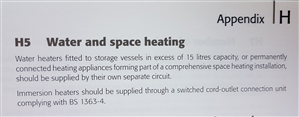Evening all,
I have a client who is looking for their swimming pool heat pump to be wired up. Manual requests for a 16A connection (although client has been running off a 13a plug!!).
The layout of the house and garden restricts the direct connection to the CU to being long and messy.
The most direct route is to the lower socket ring. Im sure I remember reading on the old forum that a 16a RCD can be classed as a FCU.
I can not seem to find reference to this in the regs though, is it stated in there?
If it is acceptable I could spur off this lower ring, in to a weatherproof CU with a double pole 16A RCD, then run SWA up the garden to the heat pump.
Cheers
Rusty


